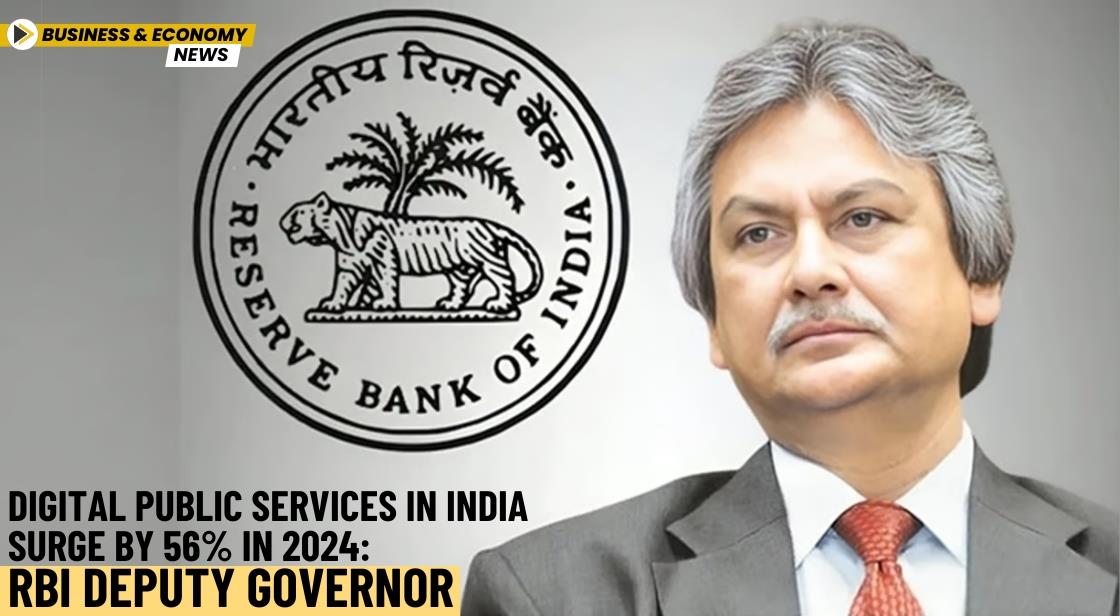Digital Public Services in India Surge by 56% in 2024: RBI Deputy Governor

News Synopsis
The daily average of e-transactions for accessing public services in India has surged by 56% in 2024 compared to 2023. This growth is accompanied by a transfer of ₹6.9 lakh crore through Direct Benefit Transfers (DBT) under 314 welfare schemes, benefiting a remarkable 176 crore beneficiaries in the financial year 2023-24, according to RBI Deputy Governor Michael Patra.
These figures were shared by Patra at the 'Digital Technology, Productivity, and Economic Growth in India' conference, underlining the substantial impact of digital infrastructure on public welfare and economic productivity in India.
Patra further highlighted that these DBT schemes have cumulatively saved an estimated ₹3.5 lakh crore up to March 2023, a clear indicator of the financial efficiencies enabled by digital governance initiatives.
India’s Digital Public Infrastructure and Growth Potential
India’s digital ecosystem—comprising a robust digital public infrastructure (DPI), a dynamic IT sector, and a large youth population, including a significant AI talent pool—positions the nation uniquely for accelerated economic growth. Patra noted, “Forecasts suggest that generative AI will contribute $359-438 billion to India’s GDP by 2029-30.” Additionally, the integration of AI by Indian firms into their production processes rose sharply from 8% in 2023 to 25% in 2024, marking rapid adoption of advanced technologies.
India’s commitment to building a ₹1.25 trillion semiconductor industry is further enhancing the country’s potential for technology-driven growth, said RBI Deputy Governor Michael Patra.
Financial Technology (FinTech) and India Stack: Expanding Financial Inclusion
India’s digital revolution is being led by FinTech innovations and the India Stack—a set of APIs enabling public finance management systems like direct benefit transfers and tax collections, while significantly expanding financial inclusion. Patra stated that these tools are fostering a more inclusive financial landscape and reducing the digital divide.
As a result, India's digital economy now constitutes about 10% of the country’s GDP. Given the rapid growth observed over the last decade, this share could expand to a fifth of the GDP by 2026.
Banking Efficiency and Cost Savings: The Impact of AI and Aadhaar
An AI-assisted analysis of Indian banks’ annual reports revealed multiple instances of productivity improvements due to digitalization. Patra shared that AI-driven processes in banks led to monthly savings of 14,500 person-days and reduced customer acquisition costs by 25-30%. Additionally, banks have achieved significant environmental benefits, saving 84 tons of paper and 4 lakh liters of fuel by reducing customer visits to branches. Customer wait times at branches have been cut by 40%, compliance monitoring time has decreased by 50%, and account opening processes have shortened to less than a day.
The Aadhaar identification system has also halved the cost of conducting the Know Your Customer (KYC) process, highlighting India's commitment to efficient digital infrastructure.
Caution: The Challenges Ahead
However, Patra issued a cautionary note, acknowledging that new technologies bring challenges. He stated, “New technologies also involve challenges such as disruptions in respect of traditional technologies and the labor market; resource-intensity – demanding substantial investment in technology, learning, and infrastructure; potential cyber threats and data breaches; ethical concerns, privacy, and potential malicious data use.” These concerns underscore the need for careful regulatory oversight as India continues its digital transformation.
Conclusion
India's digital transformation is setting new benchmarks in financial inclusion, public service accessibility, and economic efficiency. With a 56% rise in digital transactions for public services, substantial cost savings from Direct Benefit Transfers, and an increasingly digital banking sector, India is paving the way for a robust digital economy.
The integration of cutting-edge AI and the commitment to building a semiconductor industry highlight India's vision for a tech-driven future, which could see the digital economy contributing up to one-fifth of the country’s GDP by 2026.
However, as RBI Deputy Governor Michael Patra cautions, addressing challenges such as cybersecurity, privacy concerns, and potential job disruptions will be essential to sustain this growth. With strategic oversight and responsible innovation, India’s digital economy is positioned not only to transform its domestic landscape but also to emerge as a global leader in digital infrastructure and technological advancement.
You May Like









